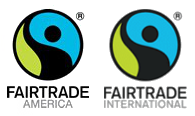


Sign-up for {N}power to get exclusive discounts, newsletters, members-only features, and more!
 Denver - Design District - Alameda and Broadway
Denver - Design District - Alameda and Broadway
368 S Broadway
Denver, CO 80209
United States
 Preferred Store:
Select a Store
Preferred Store:
Select a Store

Even though we don’t tend to think of it as such, chocolate is a luxury item that is very labor and environmentally intensive to grow.

You can learn more about each of them, and some of the other certifications you might see on chocolate, below. Click on the logo to go to the organization’s website for even more information.
 This globally recognized certification symbol of the international Fairtrade system is the original model aimed at achieving greater social equality by setting standards that protect the prices paid to farmers, prohibit child and forced labor and discrimination, and support community development, all with a focus on grower-owned coops. It does offer some limits on the use of agrochemicals and GMOs, although not as extensively as organic. There are many national Fairtrade organizations that are licensed by Fairtrade International, including Fairtrade America.
This globally recognized certification symbol of the international Fairtrade system is the original model aimed at achieving greater social equality by setting standards that protect the prices paid to farmers, prohibit child and forced labor and discrimination, and support community development, all with a focus on grower-owned coops. It does offer some limits on the use of agrochemicals and GMOs, although not as extensively as organic. There are many national Fairtrade organizations that are licensed by Fairtrade International, including Fairtrade America.
 Similar to Fairtrade International, Fair Trade USA offers certifications that aim to improve social equality and environmental sustainability, but have broadened their definitions to include collections of small farmers and even coffee estates, and plantations.[1]
Similar to Fairtrade International, Fair Trade USA offers certifications that aim to improve social equality and environmental sustainability, but have broadened their definitions to include collections of small farmers and even coffee estates, and plantations.[1]
 More specifically focused on environmental impacts, this certifies that growers are taking measures to improve the soil, reduce chemical use (although controlled use of some agro chemicals is allowed), maintain or improve tree cover and protect wildlife, provide workers with a decent wage and respect the rights of the local peoples and community. Rainforest Alliance has been criticized for close financial and structural ties to large corporate members.
More specifically focused on environmental impacts, this certifies that growers are taking measures to improve the soil, reduce chemical use (although controlled use of some agro chemicals is allowed), maintain or improve tree cover and protect wildlife, provide workers with a decent wage and respect the rights of the local peoples and community. Rainforest Alliance has been criticized for close financial and structural ties to large corporate members.
 Use of this label requires that no synthetic pesticides, herbicides or fertilizers have been used, requires a buffer between the organic cacao plants and any other crops not grown organically, and prohibits the use of genetically modified organisms (GMOs).
Use of this label requires that no synthetic pesticides, herbicides or fertilizers have been used, requires a buffer between the organic cacao plants and any other crops not grown organically, and prohibits the use of genetically modified organisms (GMOs).
 This certification program is overseen by the Institute for Marketecology (IMO) and ensures human rights are protected at all stages of production from growing to export to the final brand. This certification guarantees Social and Fair Trade standards but also offers members flexibility to adapt to local conditions.
This certification program is overseen by the Institute for Marketecology (IMO) and ensures human rights are protected at all stages of production from growing to export to the final brand. This certification guarantees Social and Fair Trade standards but also offers members flexibility to adapt to local conditions.



Sign-up for {N}power to get exclusive discounts, newsletters, members-only features, and more!
